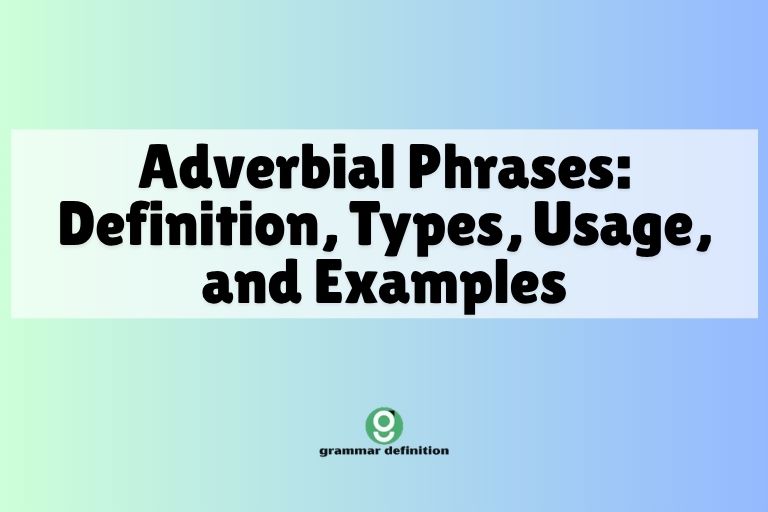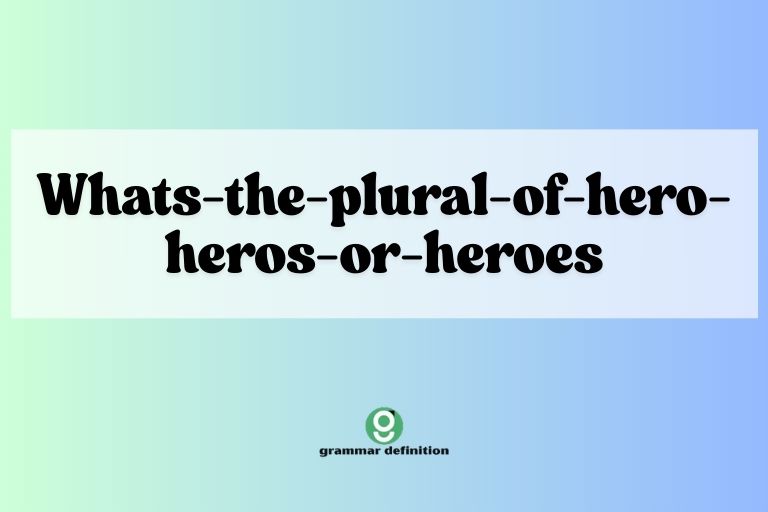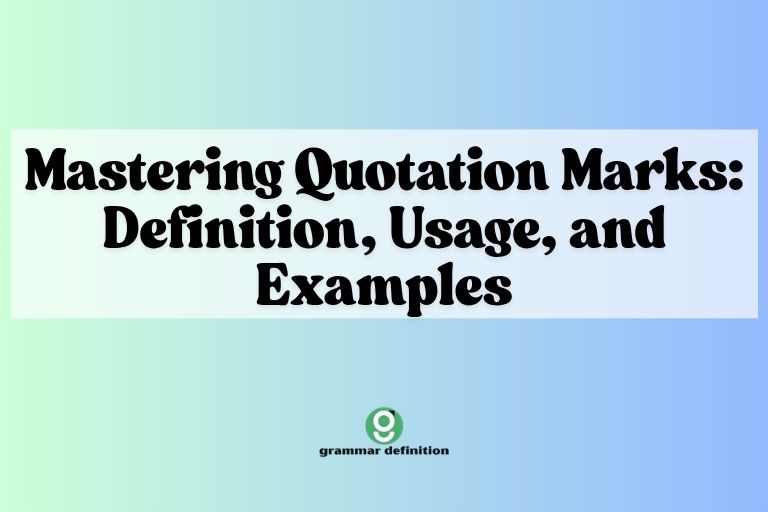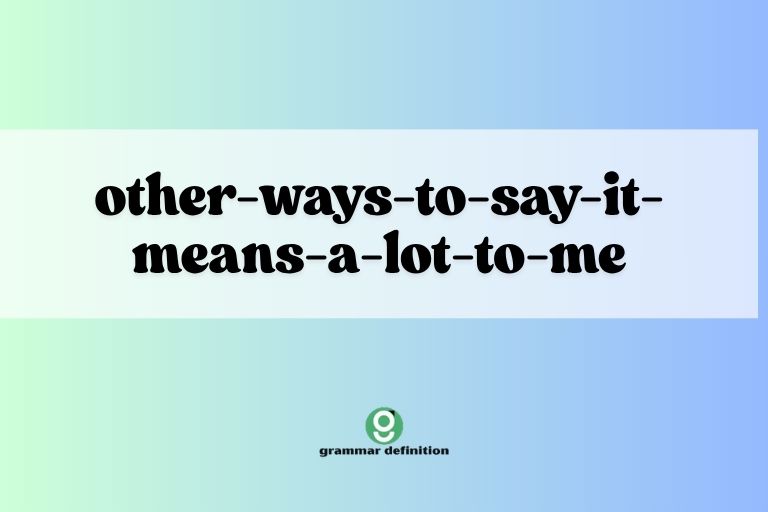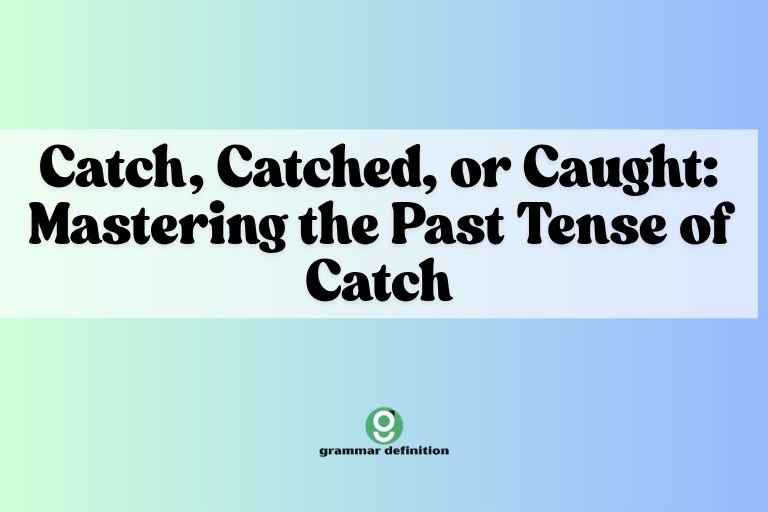Hyphens: Usage, Examples, and Comprehensive Explanation
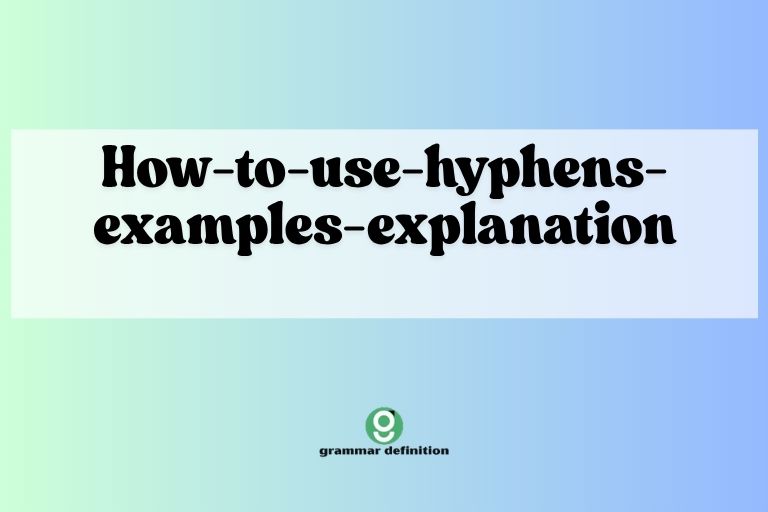
Hyphens are essential punctuation marks in English, used to connect words and parts of words. Understanding how to use hyphens correctly is crucial for clear and precise writing.
This article provides a comprehensive guide to hyphens, covering their definition, usage rules, common mistakes, and advanced topics. Whether you’re a student, a professional writer, or simply someone looking to improve their grammar, this guide will help you master the art of hyphenation.
Table of Contents
- Introduction
- Definition of Hyphens
- Structural Breakdown
- Types of Hyphens
- Examples of Hyphen Usage
- Usage Rules for Hyphens
- Common Mistakes with Hyphens
- Practice Exercises
- Advanced Topics in Hyphenation
- Frequently Asked Questions
- Conclusion
Introduction
The hyphen, a small but mighty punctuation mark, plays a significant role in English writing. It’s used to join words together, creating compound words or phrases that modify other words.
Correct hyphen usage clarifies meaning and prevents ambiguity, leading to smoother and more professional communication. Without proper hyphenation, sentences can become confusing or even unintentionally humorous.
This article aims to demystify hyphens, providing clear rules, examples, and exercises to help you confidently incorporate them into your writing.
This article is designed for anyone who wants to improve their understanding and use of hyphens. From students learning the basics of grammar to experienced writers seeking to refine their skills, the information presented here will be valuable.
By mastering hyphenation, you’ll enhance the clarity, precision, and overall quality of your written work.
Definition of Hyphens
A hyphen (-) is a punctuation mark that connects words or parts of words. It’s shorter than both the en dash (–) and the em dash (—), which serve different purposes.
The primary function of a hyphen is to create compound words, link prefixes to words, or divide words at the end of a line.
Hyphens are crucial for clarity, especially when dealing with compound modifiers that precede nouns. They help the reader understand the relationship between the words and avoid misinterpretations.
Consider the difference between “a small business owner” and “a small-business owner.” The first phrase implies an owner of a business that is small, while the second refers to someone who owns a small business.
Classification and Function
Hyphens are classified as punctuation marks that serve to connect or divide. Their main function is to create compound words, which can be nouns, adjectives, verbs, or adverbs.
They also link prefixes and suffixes to root words and are used for word division at the end of a line. The context determines whether a hyphen is necessary, and following the established rules ensures consistency and clarity in writing.
Contexts of Hyphen Usage
Hyphens appear in a variety of contexts, including:
- Compound adjectives before nouns: well-known author
- Compound nouns: mother-in-law
- Prefixes and suffixes: ex-president, self-esteem
- Fractions and numbers: two-thirds, twenty-one
- Word division at the end of a line: When a word is too long to fit on a line, it can be divided with a hyphen, ensuring that the part of the word remaining on the line is pronounceable.
Structural Breakdown
The structure of hyphenated words and phrases follows specific patterns. Understanding these patterns helps in applying the correct hyphenation rules.
Generally, hyphens connect words that function together as a single unit, especially when modifying another word.
When forming compound adjectives before a noun, the hyphen clarifies that the words work together to describe the noun. For example, in “a state-of-the-art facility,” the hyphen indicates that “state,” “of,” and “art” collectively describe the facility.
Without the hyphen, the phrase could be misinterpreted.
In compound nouns like “sister-in-law,” the hyphen is part of the established spelling and is essential for recognizing the word. Similarly, prefixes like “ex-” and “self-” often require hyphens to connect them to the root word, as in “ex-wife” and “self-control.”
Types of Hyphens
While the hyphen itself is a single punctuation mark, its usage varies depending on the context. Understanding these different types of hyphenation helps in applying the rules correctly.
Compound Adjectives
Compound adjectives are two or more words that function as a single adjective to modify a noun. They are usually hyphenated when they appear before the noun they modify. For example: a well-written book, a high-speed train, a long-term investment.
However, compound adjectives are generally not hyphenated when they appear after the noun. For example: The book was well written. The train is high speed. The investment is long term.
Compound Nouns
Compound nouns can be open (two separate words), closed (one word), or hyphenated. There’s no strict rule for which form to use, and it often depends on common usage. Examples of hyphenated compound nouns include: mother-in-law, editor-in-chief, passer-by.
Prefixes and Suffixes
Hyphens are often used with prefixes, especially when the prefix is followed by a proper noun or when it helps to avoid confusion. For example: un-American, pre-Columbian, re-creation (to distinguish from recreation).
Certain prefixes, like “self-,” “ex-,” and “all-,” commonly require hyphens. For example: self-esteem, ex-boyfriend, all-inclusive.
Numbers and Fractions
Hyphens are used in spelled-out numbers from twenty-one to ninety-nine. For example: thirty-two, sixty-five, eighty-nine.
Hyphens are also used in fractions when they are used as adjectives. For example: a two-thirds majority, a one-half share.
Examples of Hyphen Usage
The following sections provide extensive examples of hyphen usage in various contexts. These examples illustrate the rules and guidelines discussed earlier and offer practical insights into how to use hyphens effectively.
Compound Adjectives Examples
Below is a table showcasing examples of compound adjectives used before nouns. Note how the hyphen connects the words to function as a single adjective.
| Example | Explanation |
|---|---|
| A well-known actor | “Well-known” acts as one adjective describing the actor. |
| A state-of-the-art facility | “State-of-the-art” describes the facility as being modern and advanced. |
| A long-term investment | “Long-term” indicates that the investment is for an extended period. |
| A full-time employee | “Full-time” describes the employee’s work schedule. |
| A part-time student | “Part-time” describes the student’s enrollment status. |
| A fast-paced environment | “Fast-paced” describes the environment’s speed and intensity. |
| A user-friendly interface | “User-friendly” describes the interface’s ease of use. |
| A cost-effective solution | “Cost-effective” describes the solution’s affordability. |
| A time-saving device | “Time-saving” describes the device’s ability to save time. |
| A world-renowned chef | “World-renowned” describes the chef’s global reputation. |
| A record-breaking performance | “Record-breaking” describes the performance’s exceptional achievement. |
| A thought-provoking question | “Thought-provoking” describes the question’s ability to stimulate thought. |
| A hard-working individual | “Hard-working” describes the individual’s diligence. |
| A self-sufficient community | “Self-sufficient” describes the community’s independence. |
| A short-sighted decision | “Short-sighted” describes the decision’s lack of foresight. |
| A far-reaching impact | “Far-reaching” describes the impact’s extensive effect. |
| A slow-moving vehicle | “Slow-moving” describes the vehicle’s speed. |
| A brightly-lit room | “Brightly-lit” describes the room’s illumination. |
| A newly-renovated home | “Newly-renovated” describes the home’s recent update. |
| An open-minded approach | “Open-minded” describes the approach’s receptiveness to new ideas. |
| A quick-thinking response | “Quick-thinking” describes the response’s speed and intelligence. |
| A hand-crafted item | “Hand-crafted” describes the item’s creation method. |
| A heart-warming story | “Heart-warming” describes the story’s emotional effect. |
Compound Nouns Examples
This table presents examples of hyphenated compound nouns. These are typically established spellings that require the hyphen for proper recognition.
| Example | Explanation |
|---|---|
| Mother-in-law | A familial relationship. |
| Editor-in-chief | The head editor of a publication. |
| Passer-by | A person who happens to be walking past. |
| Daughter-in-law | A familial relationship. |
| Father-in-law | A familial relationship. |
| Brother-in-law | A familial relationship. |
| Sister-in-law | A familial relationship. |
| Self-esteem | Confidence in one’s own worth or abilities. |
| Self-control | The ability to control one’s emotions and impulses. |
| Vice-president | An official who is next in rank to a president. |
| Well-being | The state of being comfortable, healthy, or happy. |
| Dry-cleaning | The process of cleaning clothes with chemical solvents. |
| Off-season | The period when a particular activity is not in season. |
| Check-in | The act of reporting one’s arrival at a hotel or airport. |
| Check-out | The act of leaving a hotel after paying one’s bill. |
| Follow-up | A subsequent action or procedure that continues earlier ones. |
| Trade-off | A situation that involves losing one quality or aspect of something in return for gaining another. |
| Look-out | A person assigned to watch for something. |
| Runner-up | A contestant or team finishing second in a competition. |
| Hangar-on | A person who stays around in the hope of personal gain. |
| Stick-to-itiveness | The quality of sticking to something despite difficulties. |
| Topsy-turvy | Upside down. |
| Merry-go-round | A revolving machine with seats for children to ride on. |
| Clip-on | Attached by a clip. |
Prefixes and Suffixes Examples
This table illustrates how hyphens are used with prefixes and suffixes. These examples show how the hyphen clarifies the combination of the prefix or suffix with the root word.
| Example | Explanation |
|---|---|
| Ex-president | A former president. |
| Self-aware | Having conscious knowledge of one’s own character and feelings. |
| Un-American | Not characteristic of or in accordance with American customs or values. |
| Pre-Columbian | Relating to the Americas before the arrival of Columbus. |
| Re-elect | To elect someone again. |
| Co-worker | A person with whom one works, typically someone in a similar role. |
| Anti-inflammatory | Used to reduce inflammation. |
| Pro-choice | Supporting the legal right to abortion. |
| De-emphasize | Reduce the emphasis placed on something. |
| Re-enter | Enter again. |
| Semi-automatic | Partly automatic. |
| Sub-Saharan | Relating to the area south of the Sahara. |
| Super-sensitive | Extremely sensitive. |
| Ultra-modern | Extremely modern. |
| Vice-chancellor | An officer in a university. |
| Mid-term | Occurring in the middle of a term. |
| Mini-skirt | A very short skirt. |
| Post-operative | Following an operation. |
| Re-evaluate | Evaluate again. |
| Pre-existing | Existing before. |
| Re-examine | Examine again. |
| Non-profit | Not intended to make a profit. |
| Ex-wife | A former wife. |
| Self-sufficient | Able to provide for oneself without the help of others. |
Numbers and Fractions Examples
This table shows how hyphens are used in numbers and fractions, providing clarity and readability.
| Example | Explanation |
|---|---|
| Twenty-one | The number 21. |
| Thirty-two | The number 32. |
| Forty-five | The number 45. |
| Fifty-six | The number 56. |
| Sixty-seven | The number 67. |
| Seventy-eight | The number 78. |
| Eighty-nine | The number 89. |
| Ninety-nine | The number 99. |
| A two-thirds majority | More than half but less than three-quarters. |
| A one-half share | 50% ownership. |
| A three-fourths vote | 75% approval. |
| A one-fifth portion | 20% of the whole. |
| A five-eighths fraction | The fractional value. |
| A seven-tenths ratio | The proportional relationship. |
| A nine-hundredth chance | A very small probability. |
| One-thousandth of a second | An extremely short duration. |
| A sixty-fourth note | A musical note. |
| A thirty-second interval | A short period of time. |
| A twenty-fourth edition | The version number. |
| A forty-second parallel | A geographical location. |
| A fifty-first state | The potential new state. |
| A seventy-seventh anniversary | The celebratory milestone. |
| An eighty-eighth key | The final key on a piano. |
| A ninety-second percentile | A statistical measure. |
Usage Rules for Hyphens
Following the rules for hyphen usage is essential for clear and accurate writing. This section outlines the key rules and guidelines to help you use hyphens correctly.
Compound Adjectives Before Nouns
Use a hyphen when two or more words act as a single adjective before a noun. For example: a well-behaved child, a blue-green dress, a state-of-the-art system.
Do not use a hyphen when the compound adjective follows the noun. For example: The child was well behaved. The dress was blue green. The system is state of the art.
Adverbs Ending in -ly
Do not use a hyphen when an adverb ending in “-ly” modifies an adjective. For example: a highly effective treatment, a completely satisfied customer, a readily available resource.
Compound Nouns
The hyphenation of compound nouns can be tricky. Some are hyphenated, some are written as one word, and some are written as two separate words. Consult a dictionary to determine the correct form. Examples of hyphenated compound nouns: mother-in-law, editor-in-chief, passer-by.
Prefixes
Use a hyphen with prefixes like “self-,” “ex-,” and “all-.” For example: self-esteem, ex-boyfriend, all-inclusive.
Use a hyphen to join a prefix to a proper noun or adjective. For example: un-American, pre-Columbian.
Use a hyphen if omitting it would create a confusing word. For example: re-creation (to distinguish from recreation).
Numbers and Fractions
Use a hyphen in spelled-out numbers from twenty-one to ninety-nine. For example: thirty-two, sixty-five, eighty-nine.
Use a hyphen in fractions when they are used as adjectives. For example: a two-thirds majority, a one-half share.
Suspensive Hyphenation
When two or more hyphenated words share a common base, use a suspensive hyphen. For example: short- and long-term goals, first- and second-class tickets.
Common Mistakes with Hyphens
Even experienced writers sometimes make mistakes with hyphens. Recognizing these common errors can help you avoid them in your own writing.
Compound Adjectives After Nouns
Incorrect: The child was well-behaved.
Correct: The child was well behaved.
Compound adjectives are generally not hyphenated when they follow the noun they modify.
“-ly” Adverbs
Incorrect: A highly-effective treatment.
Correct: A highly effective treatment.
Do not hyphenate adverbs ending in “-ly” when they modify adjectives.
Unnecessary Hyphens
Incorrect: The small-business owner.
Correct: The small business owner.
Only hyphenate when the words function as a single adjective modifying the noun. In this case, “small” describes “business,” not “owner.”
Missing Hyphens
Incorrect: A state of the art facility.
Correct: A state-of-the-art facility.
Missing hyphens can create ambiguity and change the meaning of the sentence.
Practice Exercises
Test your knowledge of hyphen usage with these practice exercises. Determine whether a hyphen is needed in each sentence and provide the correct hyphenation.
Exercise 1: Hyphen or No Hyphen?
Determine if the following sentences require hyphens. If so, rewrite the sentence with the correct hyphenation.
| Question | Answer |
|---|---|
| 1. She is a well known author. | She is a well-known author. |
| 2. The project is long term. | The project is long term. (No hyphen needed) |
| 3. He is a hard working student. | He is a hard-working student. |
| 4. The results were highly unexpected. | The results were highly unexpected. (No hyphen needed) |
| 5. We need a cost effective solution. | We need a cost-effective solution. |
| 6. The technology is state of the art. | The technology is state of the art. (No hyphen needed) |
| 7. He is an ex president. | He is an ex-president. |
| 8. They are short and long term goals. | They are short- and long-term goals. |
| 9. It was a record breaking performance. | It was a record-breaking performance. |
| 10. The team needed a quick thinking response. | The team needed a quick-thinking response. |
Exercise 2: Fill in the Blanks
Fill in the blanks with the correct hyphenated word or phrase from the options provided.
| Question | Answer |
|---|---|
| 1. The company offers a ________ warranty. (two year, two-year, two year-) | The company offers a two-year warranty. |
| 2. She is very ________. (self confident, self-confident, selfconfident) | She is very self-confident. |
| 3. The ________ train arrived on time. (high speed, high-speed, highspeed) | The high-speed train arrived on time. |
| 4. The ________ policy was successful. (long term, long-term, longterm) | The long-term policy was successful. |
| 5. He is the ________ of the company. (vice president, vice-president, vicepresident) | He is the vice-president of the company. |
| 6. We need a ________ approach. (user friendly, user-friendly, userfriendly) | We need a user-friendly approach. |
| 7. The ________ project was completed early. (well planned, well-planned, wellplanned) | The well-planned project was completed early. |
| 8. The ________ was delicious. (home made, home-made, homemade) | The home-made was delicious. |
| 9. It was a ________ decision. (short sighted, short-sighted, shortsighted) | It was a short-sighted decision. |
| 10. The ________ meeting will be held tomorrow. (mid term, mid-term, midterm) | The mid-term meeting will be held tomorrow. |
Exercise 3: Correct the Sentences
Correct the hyphenation in the following sentences. If a sentence is correct, indicate “Correct.”
| Question | Answer |
|---|---|
| 1. The quick thinking detective solved the case. | The quick-thinking detective solved the case. |
| 2. The old fashioned car was a classic. | The old-fashioned car was a classic. |
| 3. The movie was thought provoking. | Correct. |
| 4. He is a self made millionaire. | He is a self-made millionaire. |
| 5. The pre existing conditions were a concern. | The pre-existing conditions were a concern. |
| 6. She is a full time employee. | She is a full-time employee. |
| 7. The newly renovated house looked great. | The newly-renovated house looked great. |
| 8. The study was well designed. | Correct. |
| 9. The dog was well behaved. | Correct. |
| 10. He is a world renowned chef. | He is a world-renowned chef. |
Advanced Topics in Hyphenation
For advanced learners, mastering hyphenation involves understanding more nuanced rules and exceptions. This section delves into some of these complexities.
More on Suspensive Hyphenation
Suspensive hyphenation can be used with multiple words and phrases. The key is to maintain clarity and avoid ambiguity.
For example: “He attended first-, second-, and third-grade classes at the same school.”
Temporary Compounds
Sometimes, words are hyphenated to create temporary compounds for specific situations. These compounds are not necessarily found in dictionaries but are used to convey a specific meaning in a particular context.
For example: “a just-in-time delivery system,” “a need-to-know basis.”
Hyphenation and Style Guides
Different style guides (such as AP, Chicago, and MLA) may have slightly different rules regarding hyphenation. It’s essential to consult the appropriate style guide for your specific writing context.
Frequently Asked Questions
This section addresses some common questions about hyphen usage, providing detailed answers and clarifications.
- When should I use a hyphen with a compound adjective?
Use a hyphen when the compound adjective precedes the noun it modifies. For example, “a well-written book.” However, do not use a hyphen when the compound adjective follows the noun: “The book was well written.” - Are adverbs ending in “-ly” ever hyphenated?
Generally, no. Adverbs ending in “-ly” are not hyphenated when they modify adjectives or other adverbs. For example, “a highly effective treatment,” not “a highly-effective treatment.” - How do I know whether a compound noun should be hyphenated, written as one word, or written as two separate words?
Consult a dictionary. There is no strict rule, and it often depends on common usage. Examples: mother-in-law (hyphenated), firefighter (one word), ice cream (two words). - When should I use a hyphen with prefixes like “self-,” “ex-,” and “all-“?
These prefixes commonly require hyphens. Examples: self-esteem, ex-boyfriend, all-inclusive. - What is suspensive hyphenation, and how do I use it correctly?
Suspensive hyphenation is used when two or more hyphenated words share a common base. For example: short- and long-term goals, first- and second-class tickets. - Are there any exceptions to the hyphenation rules?
Yes, there are exceptions, and some rules depend on the context and style guide being followed. When in doubt, consult a dictionary or style guide. - How do I handle hyphenation when a word breaks at the end of a line?
Divide the word between syllables, and ensure that the part of the word remaining on the line is pronounceable. Consult a dictionary for proper syllable divisions. - What is the difference between a hyphen, an en dash, and an em dash?
A hyphen (-) connects words or parts of words. An en dash (–) indicates a range or connection. An em dash (—) indicates a break in thought or adds emphasis.
Conclusion
Mastering hyphen usage is essential for clear and precise writing. By understanding the rules and guidelines outlined in this article, you can confidently use hyphens to create compound words, link prefixes, and avoid ambiguity.
Remember to consult a dictionary or style guide when in doubt, and practice regularly to reinforce your knowledge.
The key takeaways from this guide include the importance of hyphenating compound adjectives before nouns, avoiding hyphens with “-ly” adverbs, and understanding the nuances of compound noun hyphenation. With consistent practice and attention to detail, you can improve your writing and communicate more effectively.


